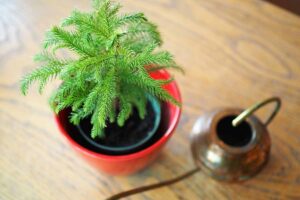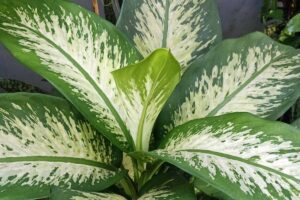It’s pretty hard to miss when a rubber tree (Ficus elastica) starts dropping its leaves.
Those thick, glossy leaves are so large, you could probably hear them falling to the ground with a thunk from a mile away.
Okay, they aren’t that heavy, but you get what I mean.
When a rubber tree loses its leaves, it’s much more obvious than it would be on some other houseplants.
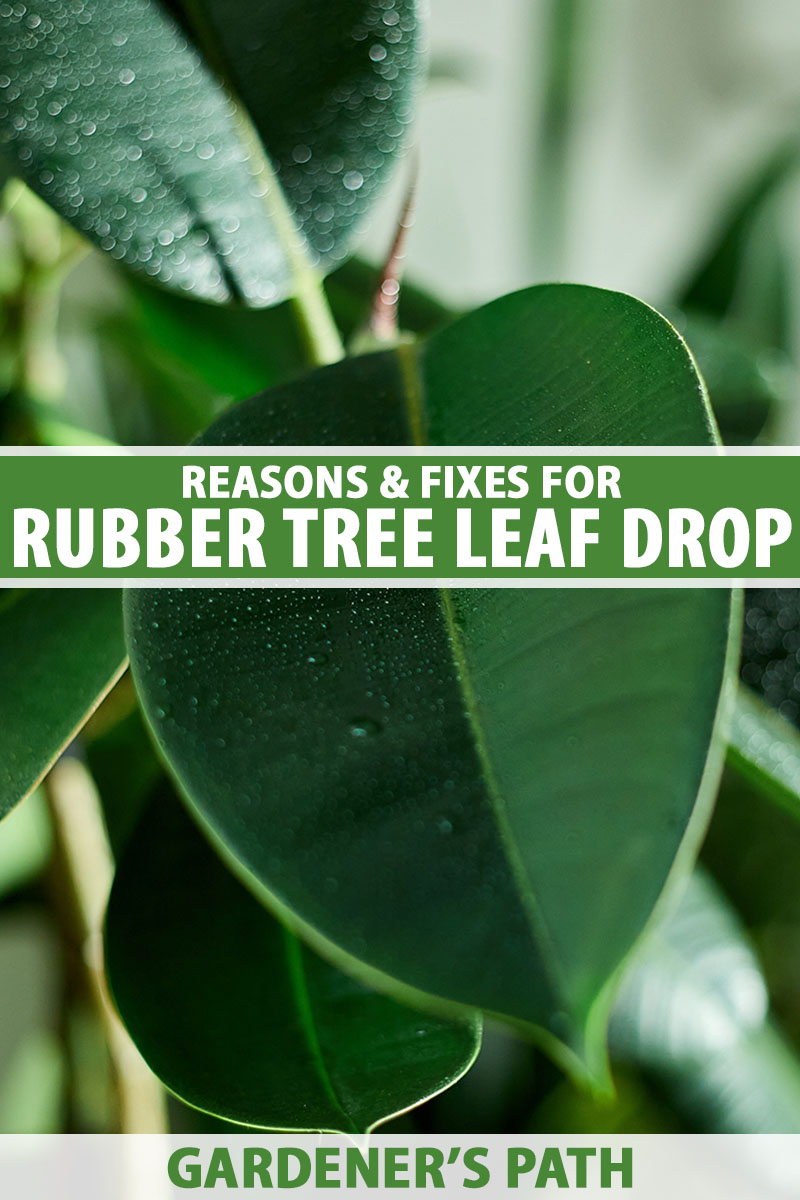
We link to vendors to help you find relevant products. If you buy from one of our links, we may earn a commission.
It’s not always possible to prevent foliage drop, since it’s an evolutionary tactic that these plants have developed in response to stress, but if you see foliage starting to fall, quick action can save your tree from ending up looking like a bunch of naked stalks.
Here are the causes that we will go over:
Common Causes of Leaf Drop in Rubber Trees
Rubber trees are part of the Ficus genus, and ficuses have a bit of a reputation for dropping their leaves all too readily.
It’s a defense mechanism that the plants have developed to deal with adverse conditions.
So if you’re seeing that foliage falling, it’s a cry for help. Let’s dive into the causes:
1. A Recent Change
All members of the Ficus genus drop their leaves readily as a method of adjusting to environmental changes.
Some are more dramatic than others. F. benjamina, for instance, has a reputation for tossing its foliage at the drop of a hat.
Rubber trees are less prone to throwing their leaves on the ground in a huff, but they will still do it when you alter their environment dramatically without a transition period.

That means if you want to move your plant from one end of your house to another, you should do it over a period of a few days. This gives the plant some time to adjust to the shift in light and temperature.
It’s not always possible to do this, so just know that if you lose some foliage, it’s totally normal, and the plant will grow back once it settles into its new home.
If you need to repot your plant, there isn’t much you can do to lessen the shock except to make sure you work quickly.
2. Extreme Temperatures
Rubber trees can tolerate a pretty wide range of temperatures, with brief periods down to 50°F. But anything lower, or temperatures around 50°F for too long, and you can be sure you’ll be finding foliage on the floor.
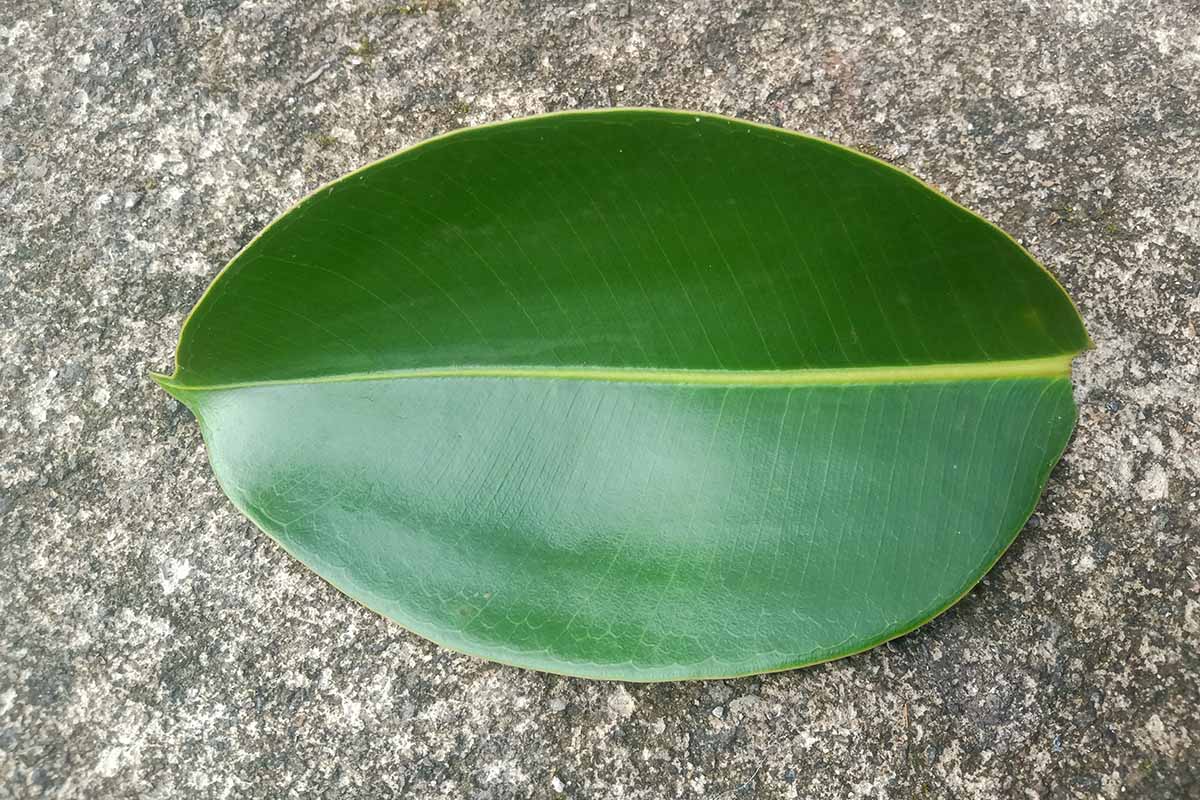
They also thrive in temperatures above 80°F, but if the temperature climbs to 90°F or above for too long it could also result in leaf drop, particularly if the air is also dry.
Ideally, keep your plants in temperatures somewhere between 60 and 85°F.
3. Inappropriate Light
Many plants will drop their leaves when they receive too much or too little sun.
Most will replace their leaves with ones better suited for the light available, but there is only so much that a plant can do to adapt.
Rubber trees need quite a bit of light, so the issue is typically not enough sunlight rather than too much.
F. elastica does best with two or three hours of direct sunlight in the morning and four or five hours of bright, indirect light each day for the best growth.
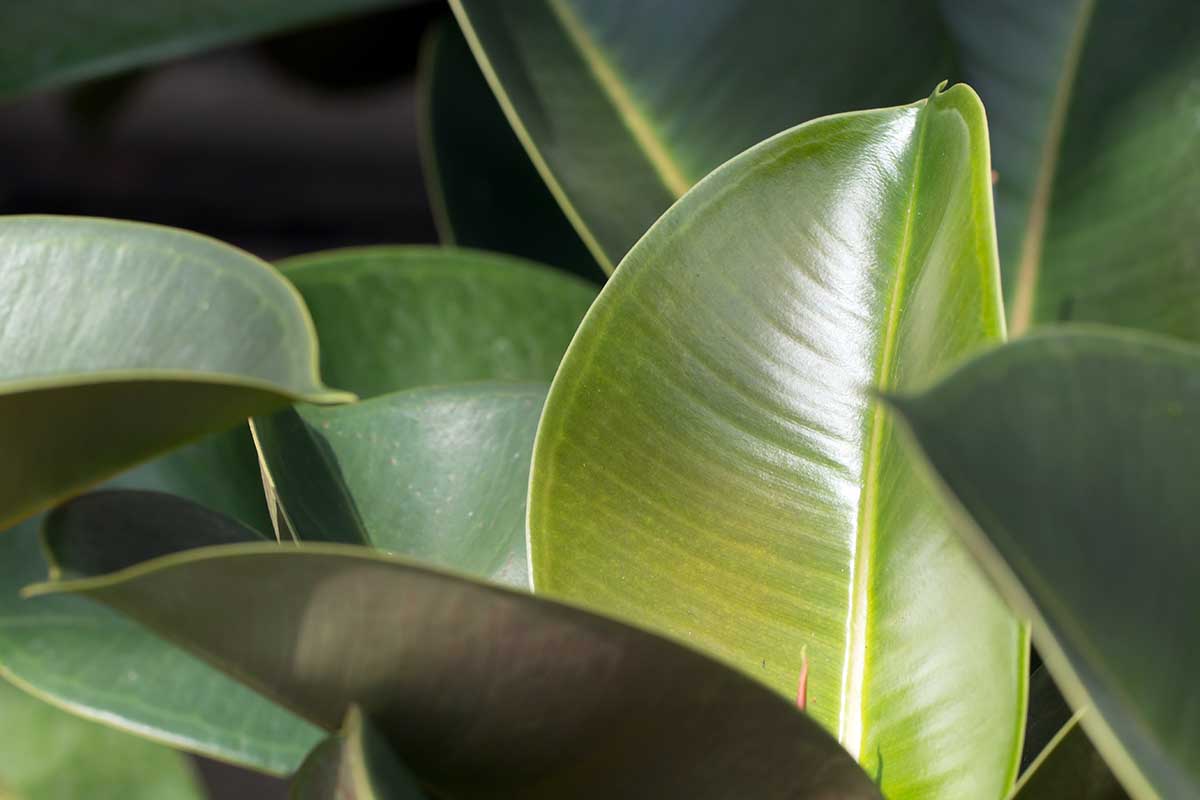
Of course, these plants will adapt to less light, but if the light is too low, they will start dropping those leaves.
A rubber tree placed in bright, direct afternoon sun or more than a few hours of morning sun will typically react by dropping leaves. This type of light is far too strong unless the plant has been slowly and gradually introduced to the brighter exposure.
It can be quite hard to determine what the quality of light is like as our eyes are extremely adaptable. So we might look at a spot next to a window and think it looks perfectly bright. But it might actually be shaded by a tree and fail to let in as much sun as F. elastica needs.
The best way to check light is to use a meter.
These can be affordable and can be multi-purpose, allowing you to check the soil pH and water level as well. Our guide to soil moisture meters has a few excellent selections.
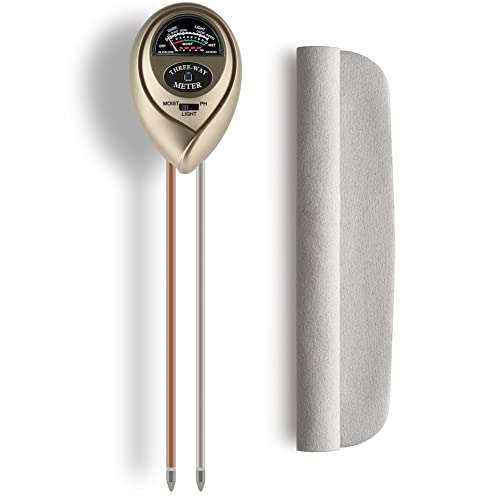
Or go with a classic like this Alanmond 3-in-1 tester, available at Amazon.
4. Pest Problems
Rubber trees are attacked by all the usual houseplant suspects: aphids, mealybugs, scale, and spider mites. Any one of these sapsucking insects can cause the plant to drop its leaves.
Typically, you’re going to see other symptoms before the leaves start tumbling down, though.
Yellowing, fine webbing, speckling, or brown areas are all common signs that spider mites are making a meal of your plant.
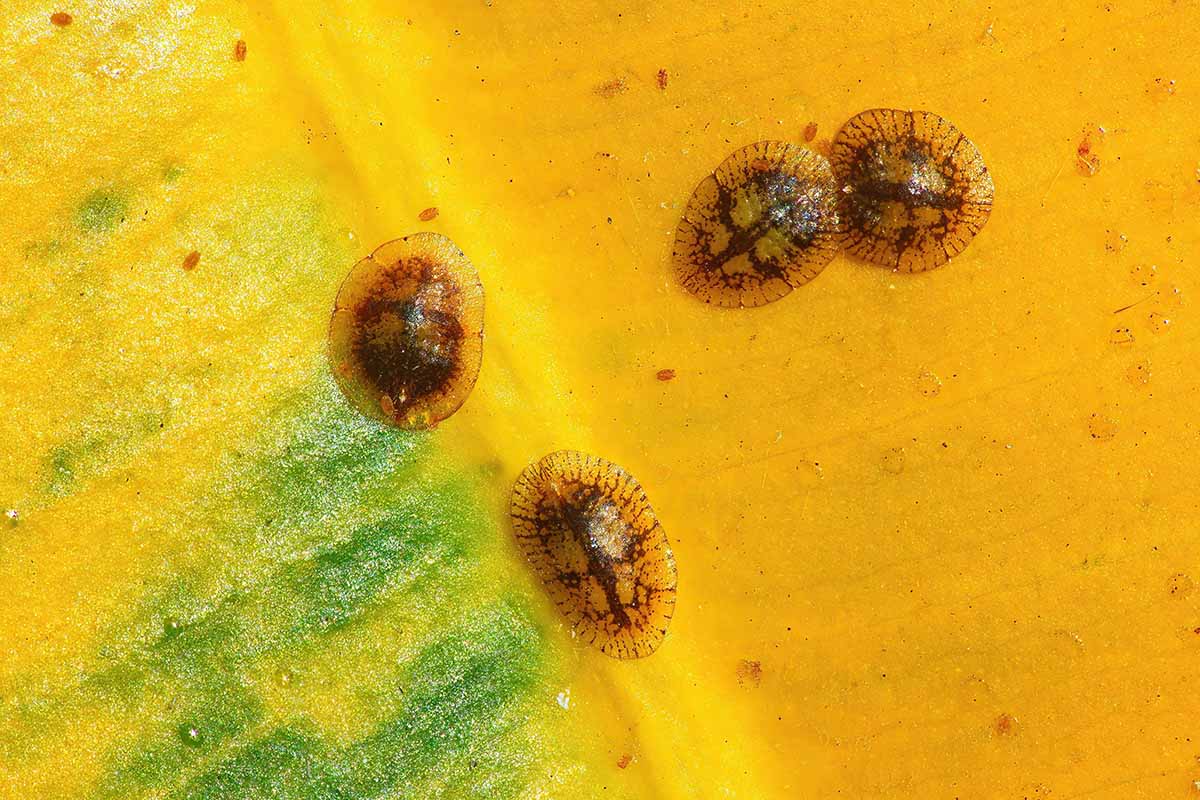
Brown areas, yellowing foliage, and speckling are also common signs of aphids, mealybugs, and scale.
If you look closely, you’ll probably be able to see some of the critters themselves.
If so, once you send those pests packing, your plant will recover and stop dropping leaves.
For tips on identifying and dealing with any one of these pests, visit our guide to growing rubber trees.
5. Root Rot
One of the things that I love most about rubber trees is that they don’t really suffer from diseases. The one biggie you need to watch out for is root rot. This goes hand in hand with overwatering.
Root rot can be caused by watering so much that you simply deprive the roots of oxygen, and they start to turn soggy and brown as they rot away. But it can also involve the fungus Rigidoporus microporus.
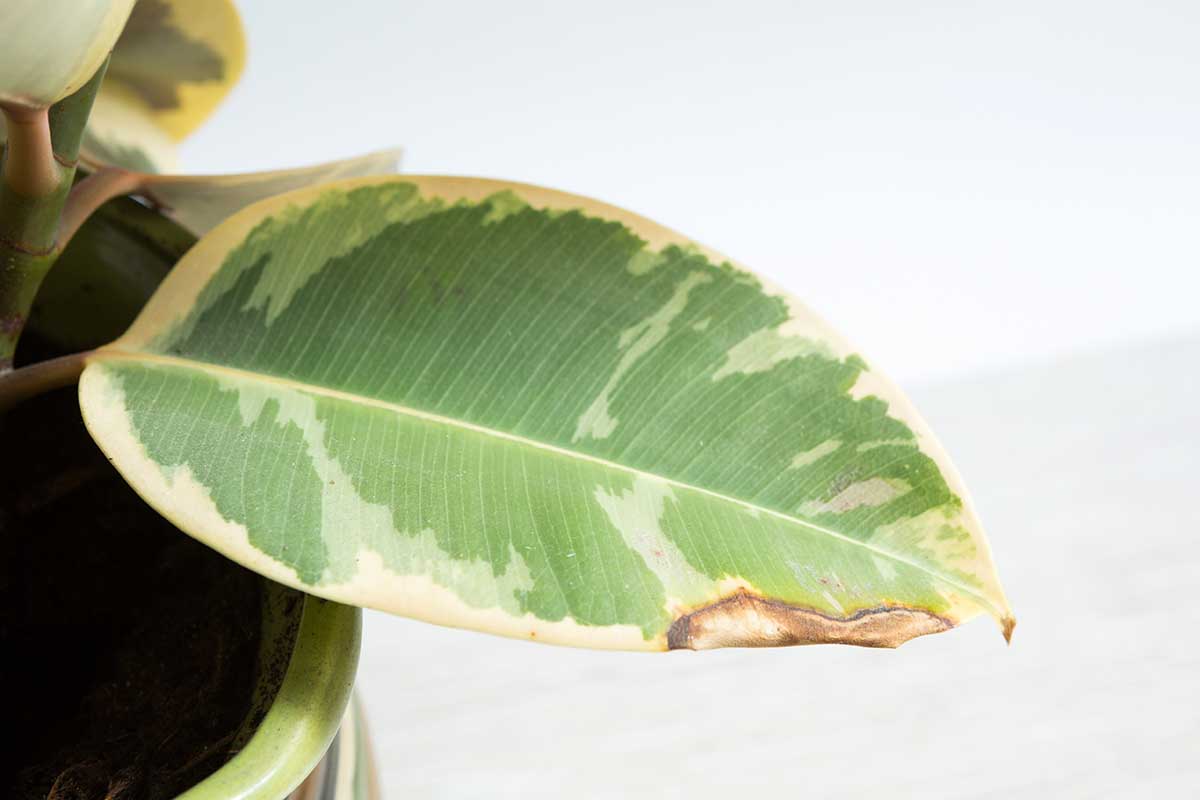
Root rot generally causes the foliage to lose color and turn soft before they drop off the plant. You’ll often see browning at the edges in the early stages.
Dealing with root rot, whether it involves a pathogen or not, involves removing the rubber tree from its pot and removing all the soil from around the roots.
Spray the roots with copper fungicide and wipe out the pot with soapy water. Make sure that the drainage holes are open and not clogged up.
Place the plant back in the pot and refill with fresh, new potting soil.
Going forward, you need to be extra careful about watering.
6. Watering Issues
I admit it, I’m a chronic overwaterer. I have to hold myself back from watering too much. In the past, I had to sweep more than a few leaves off the floor under my rubber tree before I got the hang of caring for my plant.
I figured that, like many houseplants, rubber trees like the soil to stay moist but not wet at all times. Nope. I was so wrong!

You should allow the top third of the soil to dry out completely before you water. Those thick leaves retain a good amount of moisture, and the plant can go longer than you might think without additional water.
And overwatering can quickly lead to root rot, as discussed above.
On the other hand, if you’re not providing enough water and the soil is dry beyond the top third, then the plant is not receiving enough moisture and is likely dropping leaves because it can’t support them.
The solution, in that case, is simple. Water more!
Put the Glue Away, Those Leaves Will Stay
Falling foliage is your plant’s way of telling you it’s having trouble.
Sometimes it’s just a warning that your rubber fig is mad about a recent move, but it can also be a sign that there is something bad happening. Now, hopefully, you know how to tell what’s going on and how to fix it.
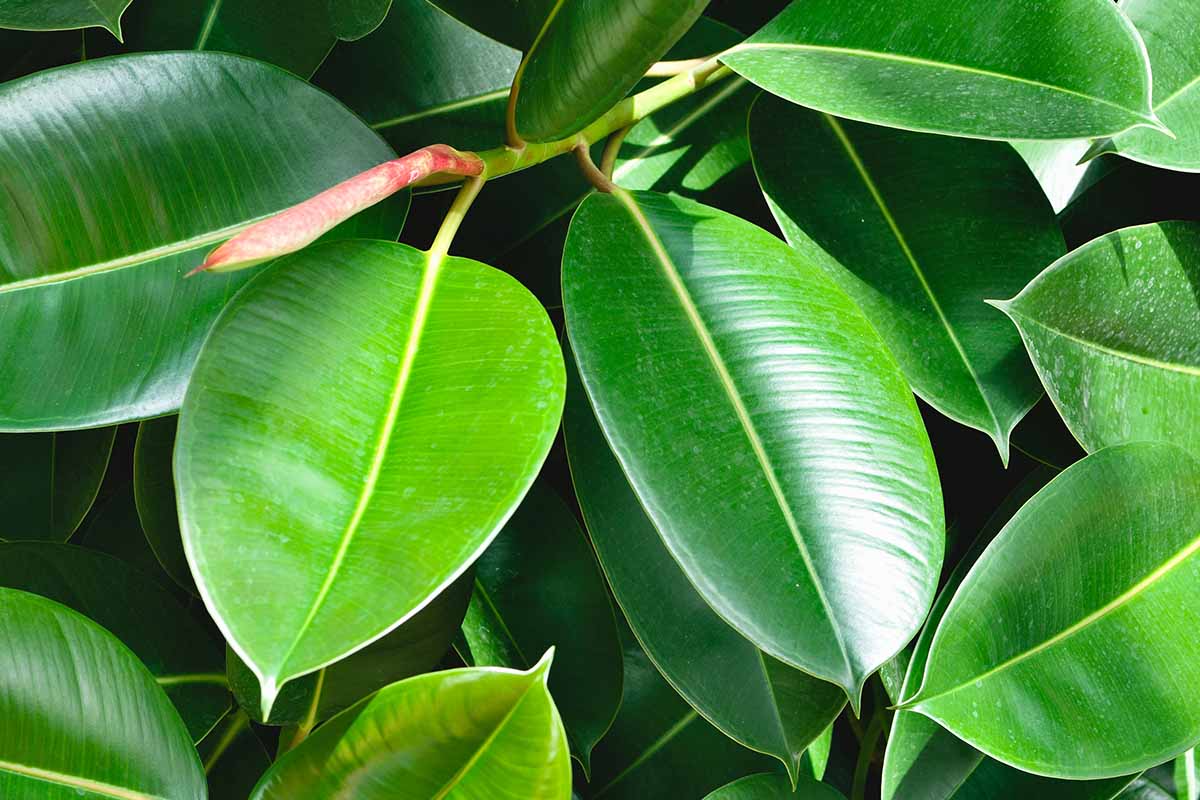
What was causing your problems? Is your plant still struggling? Let us know what you’re seeing in the comments, and we will do our best to help.
If you’d like to learn more about the plants in this genus, here are a few guides that you might find useful:
